How can you leverage data tracking to get product growth insights?
Analyzing data is the key to achieving customer success and product growth. The actionable insights from the analyses will help you better understand the user journey, improve your company’s bottom line, and optimize the user experience.
So let’s find out how to create a data tracking plan to collect and analyze all data relevant to your SaaS business.
What’s your primary goal with data tracking?
What’s your biggest data tracking challenge?
How are you currently analyzing all your user data?
It’s time for a more actionable data tracking plan.
Stop drowning in data and start getting answers. Userpilot helps you move beyond basic analytics by making it easy to track feature usage, collect in-app feedback, and guide users to value—all without writing code. See how you can improve your entire user journey.
Try Userpilot Now
See Why 1,000+ Teams Choose Userpilot

What is data tracking?
Data tracking is the process of collecting, identifying, and categorizing data for analysis. It involves tracking events and metrics and using the insights to make data-driven business decisions.
What is a data tracking plan?
A data tracking plan is the framework and strategies you implement to collect and analyze data for actionable insights.
It involves using tools or methods for tracking data and determining the events you need to track. Planning the process helps to align your teams with the same goals during data collection, tracking, and implementation.
How to create a data tracking plan?
Here’s how you can build a data tracking plan to make it easier to gather valuable insights.
Define your tracking goal
Your first task is clearly defining your tracking goal so that your team has a set direction.
You can establish goals by determining what specific questions you wish to answer or insights you need that would help you improve business performance, enhance user experience, or develop products.
Then, you should select your key metrics and time frame. You can measure your progress toward your goals and understand your customers better by tracking these metrics in each time period.
Moreover, using a goal-setting framework is advisable to guide you in laying the groundwork for your tracking plan. The SMART goal-setting framework, shown below, highlights the key characteristics that goals should have. Goals should be specific, measurable, achievable, relevant, and time-bound.
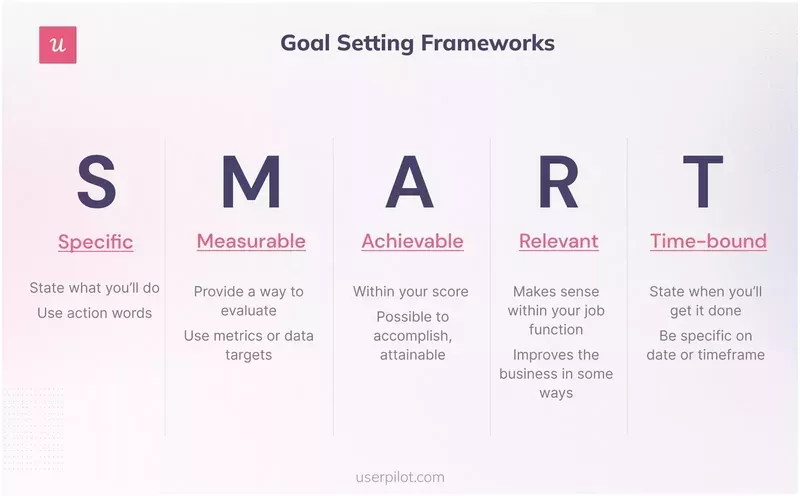
Select data collection methods
Before collecting data, you need to choose your data source (i.e., product analytics, customer surveys, etc.) and data points (i.e., active users, web visitors, etc.). Then, you can select the tools with which you will track data.
Operations teams spend 80% of their time putting out data and processing fires while using only 20% to execute their business strategy and enhance the customer experience.
This is why selecting the right tools is crucial so that your teams can track data automatically, efficiently, and accurately. The right software will also ensure ethical compliance and alignment with your company’s data protection policy.
Analyze data for valuable insights
Use data tracking software for analyzing data. Although there are many such software, not all would provide adequate services or ensure customer satisfaction. You would want to choose the software that best suits your business requirements, which will discuss later in the article.
Below is an example of a feature analytics dashboard by Userpilot. You can use this dashboard to determine which features are the most popular among users and which show poor engagement.
For instance, you can use the insights to offer in-app guidance or improve the performance of features with low engagement to boost customer satisfaction.
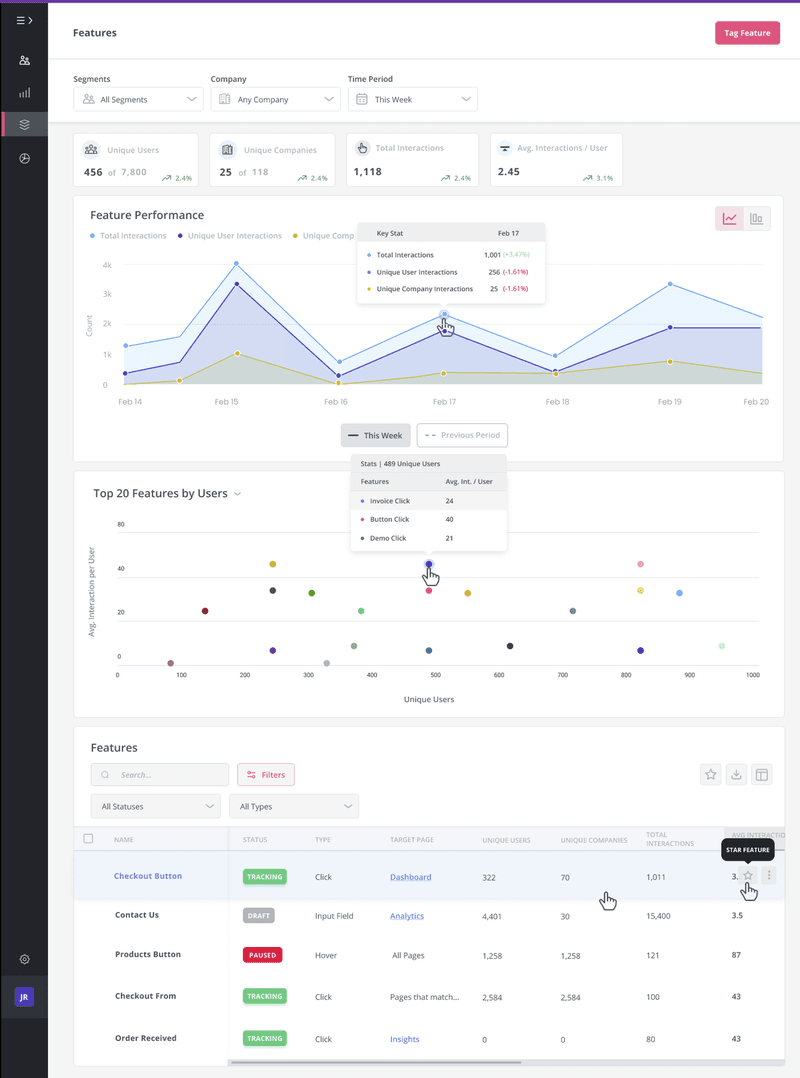
How to collect data for your tracking plan?
Now let’s see how you can collect relevant data for your tracking plan.
Collect customer data using welcome surveys
You can start collecting customer data from the beginning of the user journey. Welcome surveys create a good first impression by showing users that you care about their needs. You can use these surveys to collect basic customer information, such as user roles, company size, goals, etc.
The data collected will help you understand customer needs and their jobs to be done. Then, you can segment customers based on their common characteristics and personalize the customer experience for each segment.
Moreover, you can measure metrics by cohort. That is, you can track metrics such as activation rate, churn rate, retention rate, etc., for each user segment. This will help identify your highly satisfied customers and those who require more support to get value from your product.
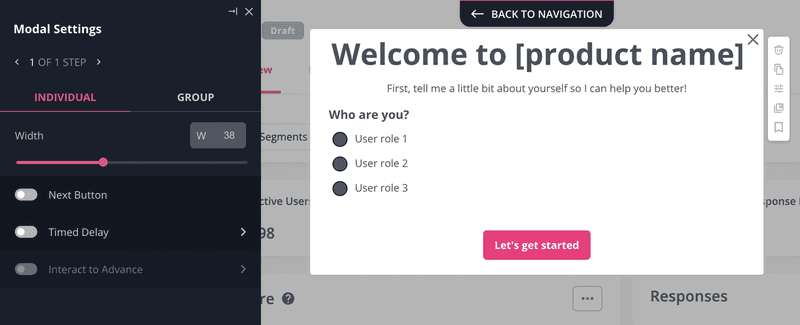
Tag features to collect usage data
Feature tags allow you to tag features specific elements in your website or app that you would like to track. Thus, you can use feature tags to track feature usage. This helps you find features with high and low engagement to know which features need more attention.
Moreover, you can use feature tags to monitor user interactions on your web pages, such as clicks, hovers, text input, etc., which indicate feature usage.
For example, you can identify areas of rage clicks or dead clicks. While users make rage clicks out of frustration, dead clicks occur when users click on a specific element of your product, and nothing happens. Tracking these clicks using feature tags can thus expose friction points so you can make necessary improvements.
Tracking feature usage also lets you measure feature adoption rates. A high usage level is a sign of feature adoption.
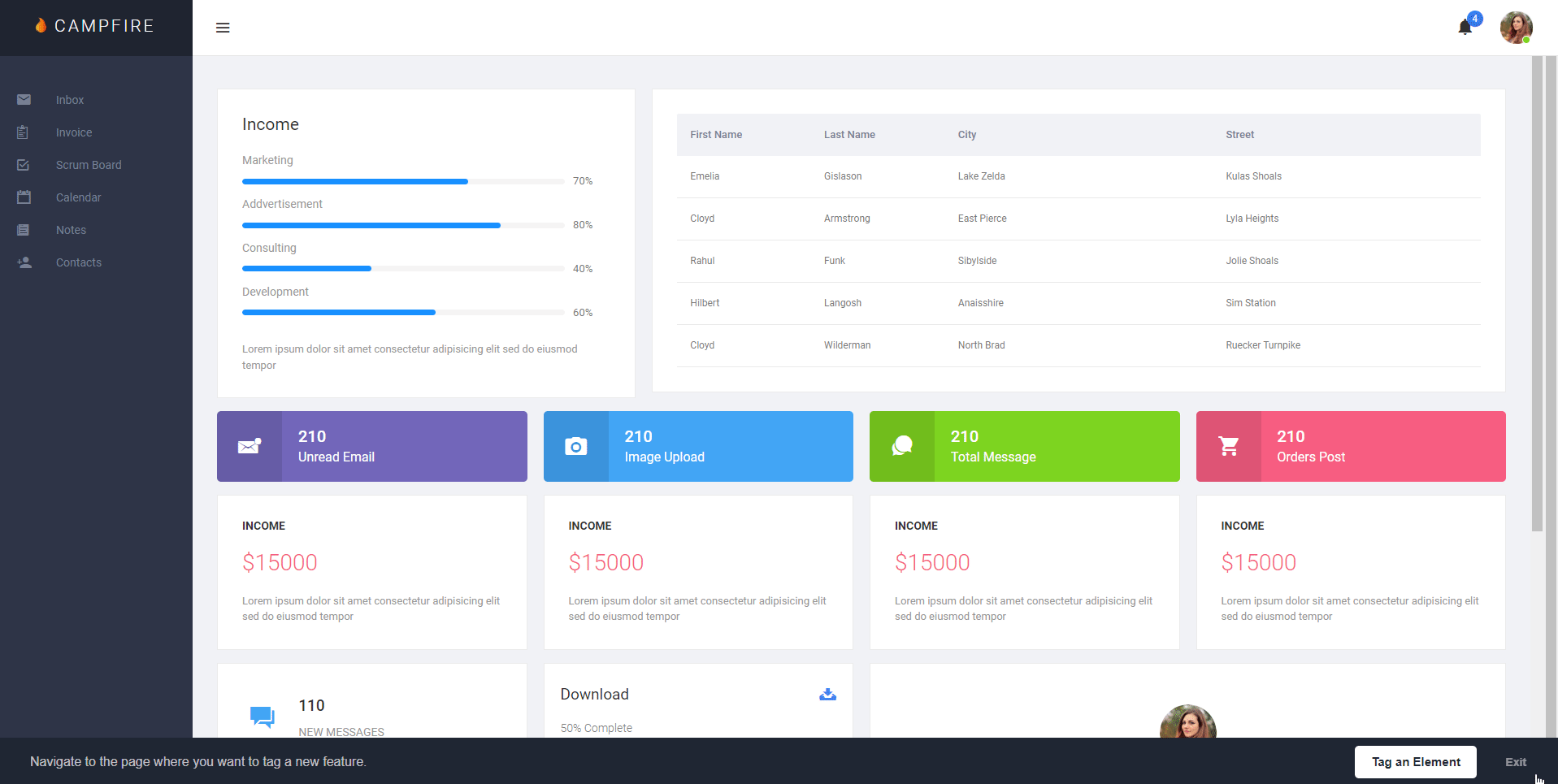
Set up custom events to monitor user activities
A custom event is a group of events that represent specific user activities. You can use a custom event to monitor user engagement funnel data, user journey data, etc. This will help you optimize the engagement funnel and drive users through each stage of the user journey easily.
Suppose you want to track the progress of users toward the activation point. When any of the specified events occur, the custom event will match, and you can study the analytics related to the events.
If your new users have reached activation, the custom event will include a series of actions or events that lead users to the activation point.
You can then track the event data for activation, such as the number of users who have reached the activation point, and calculate the activation rate.
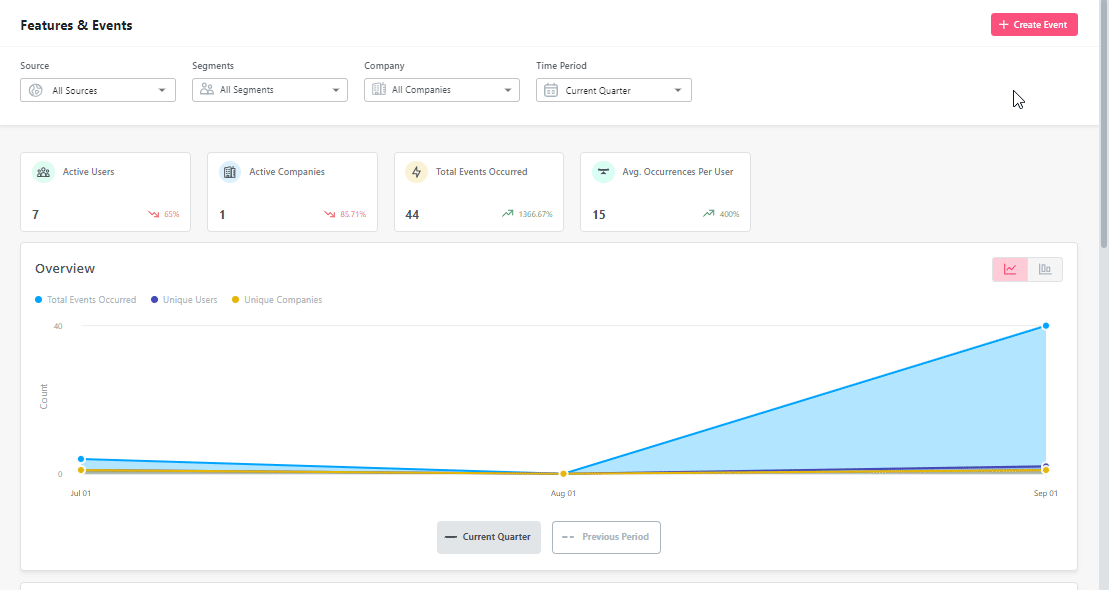
For instance, you can track user engagement funnel data and user journey data to identify and remove friction points. This will help you optimize the engagement funnel and drive users through each stage of the user journey easily.
Trigger surveys to collect customer satisfaction data
In-app microsurveys offer insights directly from your customers. You can trigger a variety of in-app customer satisfaction surveys, depending on what data you want to collect.
Customer satisfaction surveys include the Customer Satisfaction Score (CSAT) survey, Customer Effort Score (CES) survey, and Net Promoter Score (NPS) survey. These surveys let you measure customer satisfaction metrics and collect customer feedback for product improvements.
The example below shows you can collect customer feedback on the onboarding experience via a customer satisfaction survey. It will help you understand whether your onboarding flow adds value to customers.
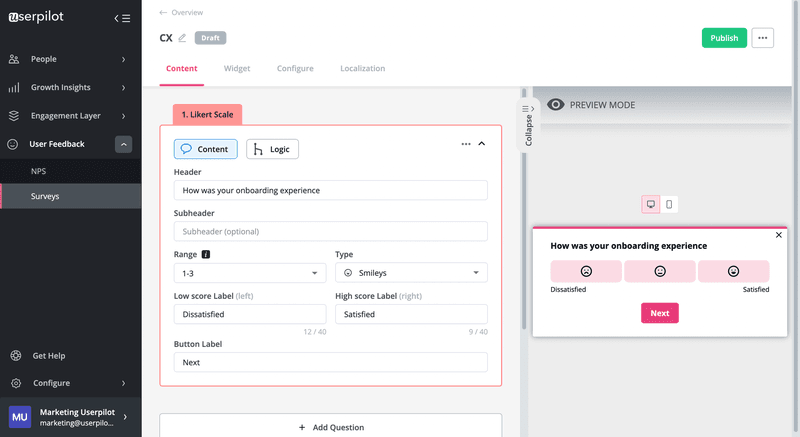
Furthermore, you can add follow-up questions to customer satisfaction surveys to gather qualitative feedback. Customers can then share the exact reason behind their responses so that you know where to make improvements.
Important metrics to include in your data tracking plans
Let’s briefly discuss the six key metrics you must track.
- Conversion rate: This is the rate at which your product can convert free trial or freemium users into paying customers. The trial-to-paid conversion rate helps to measure the effectiveness of your marketing and sales campaigns.
- Activation rate: This is the percentage of new users who reach the activation milestone and experience the value of your product. Low activation rates indicate the presence of friction points, so you might have to provide in-app guidance to help users reach the activation point faster.
- Product adoption rate: It is the rate at which customers actively use your product, as opposed to only downloading the app or reaching activation. It shows how many customers become regular users of your product to achieve their goals.
- Retention rate: It is the percentage of customers you can retain successfully over a given period. This metric helps businesses assess their ability to secure long-term customer relationships.
- Average revenue: Average revenue per user (ARPU) is the revenue you can earn from each customer in a specific period. It helps you evaluate the financial performance of your customer base.
- Customer LTV: Customer lifetime value is the expected revenue you can earn from each customer over the course of their business with you. Tracking this metric will help you evaluate the long-term financial health of your business.
Best data tracking software for customer data analysis
If you’re on the lookout for the best data tracking software for your business, here are the top four in the market and their best use cases.
Userpilot for actionable in-app data tracking
Userpilot is a product growth platform. One of its core functionalities includes in-app data tracking and analytics.
- Feature tags: You can use feature tags to track feature usage and feature adoption rates. To boost the feature adoption rates for features with low engagement, you can trigger contextual in-app guides such as interactive walkthroughs to provide step-by-step help in using the features.
- Tracked & custom events: Userpilot lets you create both tracked events and custom events. Unlike custom events, tracked events are singular events/actions. You can access all the analytics in the overview tab and use the insights to improve your onboarding flows or customer service.
- In-app surveys: Userpilot enables you to build various in-app surveys such as CSAT, CES, NPS, and product improvement surveys. You can trigger surveys to appear contextually to target customers.
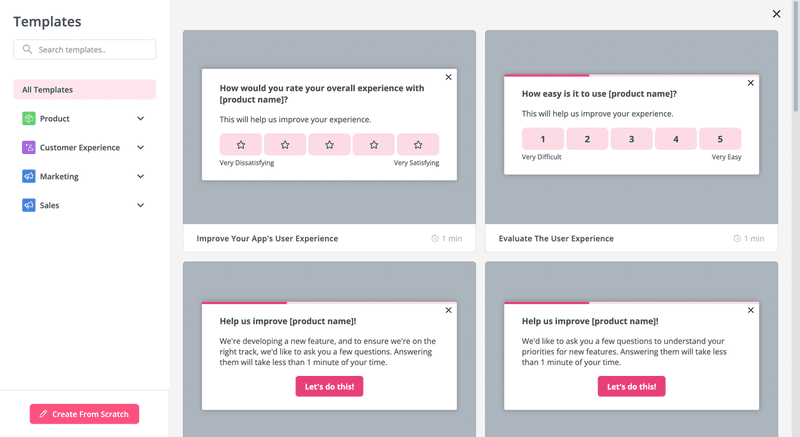
Userpilot allows you to analyze data to gain actionable insights using the following:
- Customer segmentation: Tracking and analyzing data separately for each customer will help you understand every segment in-depth. You can then design customized onboarding experiences for all customers.
- Survey analytics dashboard: Be it an NPS survey or other microsurveys, the dashboard will help you evaluate the survey responses effectively.
- Product analytics dashboards: The product analytics dashboard helps you evaluate the results and extract meaningful insights. Userpilot also has two upcoming features – path analysis and funnel analysis – that will help you identify the touchpoints that lead to good customer experiences and optimize your conversion funnel.
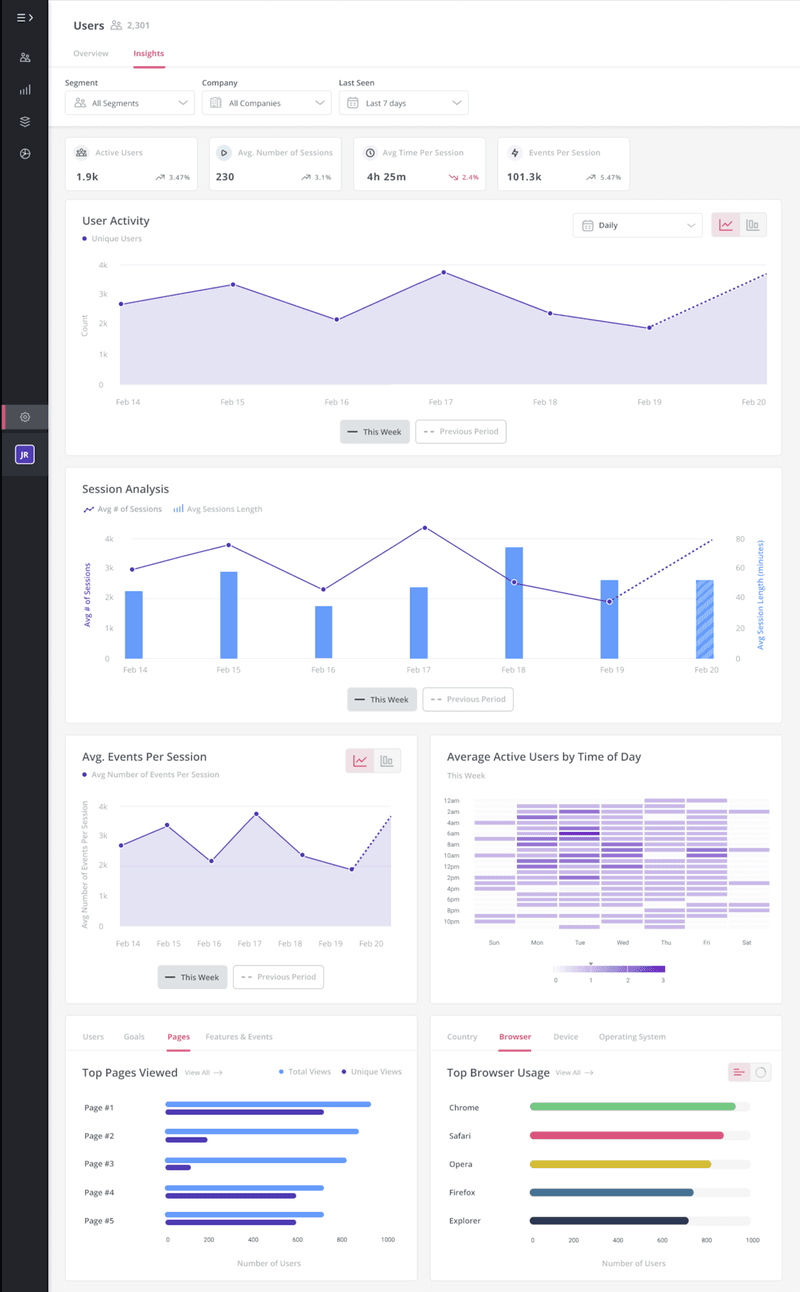
Google Analytics for tracking web users’ data
One of the popular free tools, Google Analytics, is great for tracking your web users’ data. You can use it to track common metrics like session duration, number of website visitors, in-app purchases and product revenue, etc.
The new version of Google Analytics – GA4 – uses first-party data. It does not need cookies and complies with general data protection regulations.
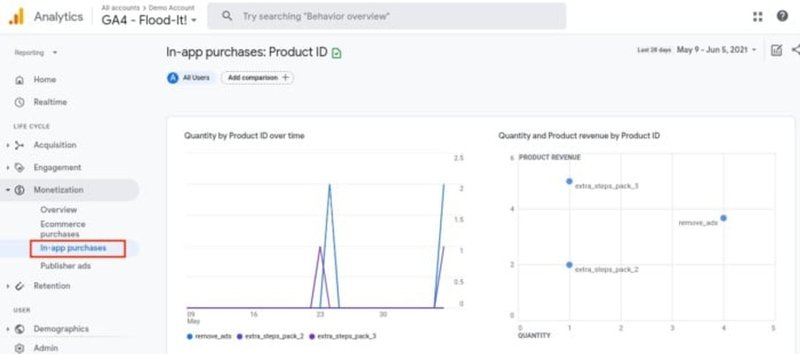
Mixpanel for tracking customer behavior data
With advanced analytics functionality, Mixpanel is an excellent tool for tracking customer behavior data. Mixpanel is based on event tracking, and you can track user interactions like scrolling, button clicks, and navigation.
You can get easy access to key metrics throughout the user journey. Mixpanel also breaks down the customer data by behavior, demographics, or account type so that you get in-depth insights.
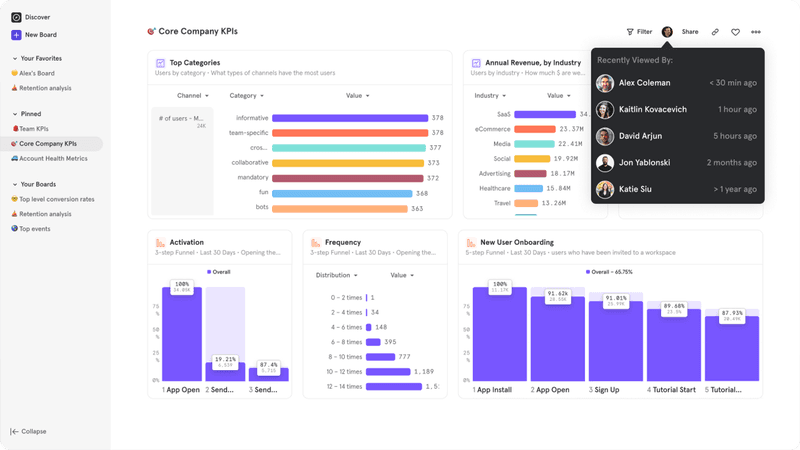
Segment for data tracking and management
As a data management tool, Segment uses its API to collect data from your product (i.e., web, server, mobile) via open-source libraries for all platforms.
The tool also helps backup and download data for data management purposes. It aligns data across teams and helps them make data-driven decisions.
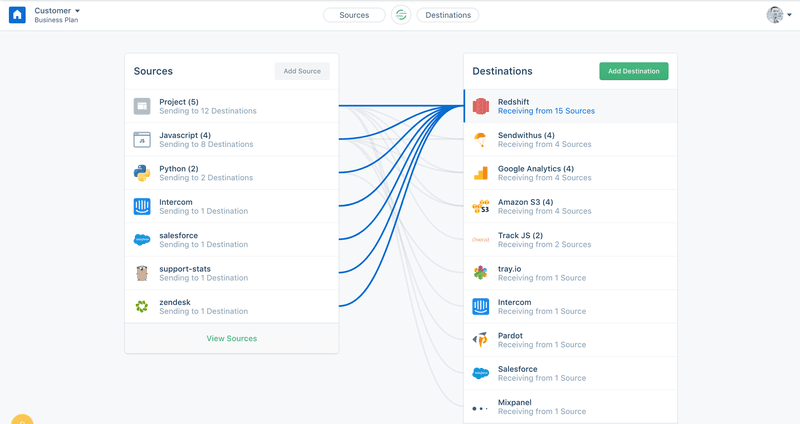
Conclusion
Data tracking is essential for understanding your target audience, revealing issues in your product, and making data-driven decisions. You should always have a data tracking plan to track and analyze data efficiently.
Want to get started with in-app data tracking? Get a Userpilot demo to perform actionable analytics and achieve product growth.







